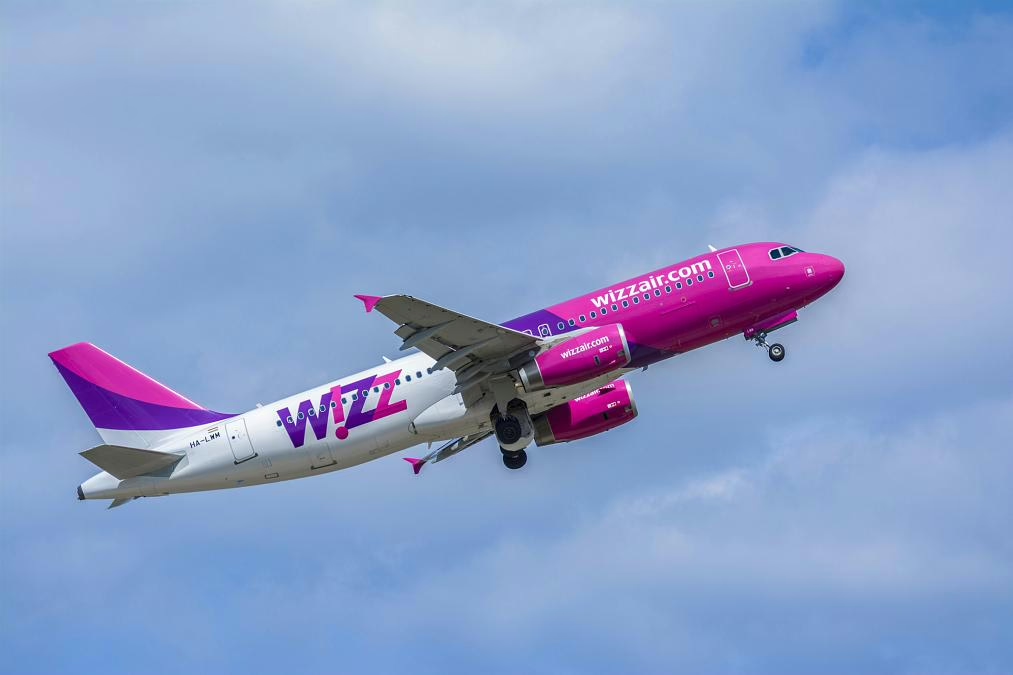Budget carrier Wizz Air anticipates ongoing disruptions from faulty Pratt & Whitney engines will persist through late 2027, with the airline’s chief financial officer calling the situation “extremely frustrating” at an industry conference Tuesday.
The Hungarian low-cost carrier currently has 38 Airbus A320neo and A321neo aircraft parked for engine maintenance, down from 60 jets a year earlier but still representing nearly a quarter of its next-generation fleet, according to airline officials.
Speaking at the International Society of Transport Aircraft Trading conference in Prague, CFO Ian Malin said the airline has yet to see meaningful improvements in repair turnaround times despite promises from the engine manufacturer.
“Overall, the plan right now is to get the entire fleet ‘un-parked’ by the end of calendar year 2027,” Malin said. “Right now, Pratt is showing some availability of engines, but the overall turnaround time is not improving. Pratt has said that that’s coming down. I haven’t seen it yet. It is extremely frustrating, because we’ve been dealing with it now for two-and-a-half years.”
Malin added there is “no absolute guarantee” the full fleet will be operational by that target date.
The grounded aircraft use Pratt & Whitney’s PW1000G engines, which suffer from a manufacturing defect involving contaminated powdered metal in high-pressure turbine and compressor components. The flaw has forced widespread inspections and repairs, grounding hundreds of aircraft globally and disrupting airline operations for several years.
Financial Impact
The engine problems have hammered Wizz Air’s bottom line. In its fiscal year ending March 31, 2025, the carrier reported operating profit plunged 61.7% to 167.5 million euros ($195 million) from 437.9 million euros ($510 million) the previous year. The airline cited “significant challenges” related to P&W engine maintenance.
CEO Jozsef Varadi said his airline lacks control over the situation. “We don’t fully control our destiny here; we are at the mercy of the manufacturer,” he said.
Fleet Composition
Wizz Air operates an all-Airbus narrowbody fleet, with nearly three-quarters consisting of A320neos or A321neos. Data shows the 38 grounded aircraft represent 22% of the airline’s 173 next-generation planes. Two are A320neos, while 36 are A321neos.
The carrier holds the distinction of being the world’s largest A321neo operator, with 131 currently in service and orders for an additional 267 frames scheduled for delivery through 2029.
The airline’s total fleet includes 30 A320-200s, four operational A320neos, 39 A321-200s, and 131 operational A321neos. It has 13 additional A320neos on order.
Wizz Air originally ordered 47 A321XLR aircraft but is reducing that commitment after deciding to close its Abu Dhabi base. The airline now expects to receive a maximum of 15 A321XLRs, converting the remainder to standard A321neo orders.
Growth Despite Challenges
Despite the engine setbacks, Wizz Air announced several new routes from Gdansk Lech Walesa Airport this week. The Polish airport has served as a major operational base for the carrier for two decades, with nine aircraft stationed there.
The airline launched winter service to Madrid and Catania, and recently added five destinations for the coming months. Poprad service begins Dec. 25 with twice-weekly flights. Athens and Tallinn routes start May 1, operating three and five times weekly. Nice and Vilnius service launches May 2, each with four weekly flights.
In Poland’s aviation market, Ryanair holds the top position with roughly 37% of capacity, compared to Wizz Air’s 23%, according to Air Service One. However, Wizz Air dominates at Gdańsk, where it carried 2.8 million passengers in 2024, surpassing Ryanair’s 2.1 million. The airport ranks as Wizz Air’s second-largest Polish operation after Warsaw Chopin Airport among the 12 Polish airports it serves.

Key Takeaways
- Wizz Air projects Pratt & Whitney engine disruptions will persist through late 2027, with 38 aircraft currently grounded for maintenance.
- The engine defect caused operating profit to drop 61.7% to €167.5 million ($195 million) in fiscal 2025.
- Grounded aircraft represent 22% of Wizz Air’s 173 next-generation jets, limiting growth capacity.
- The carrier remains the world’s largest A321neo operator with 131 in service and 267 additional aircraft on order through 2029.
- Despite setbacks, Wizz Air continues expansion with new routes from Gdansk, its second-largest Polish base.








